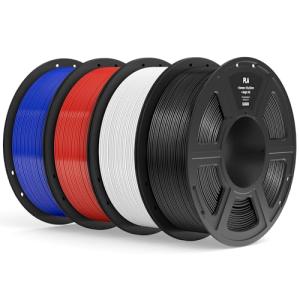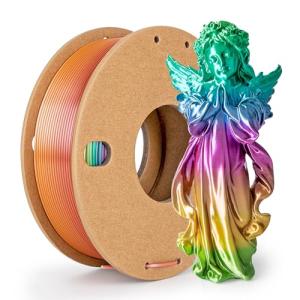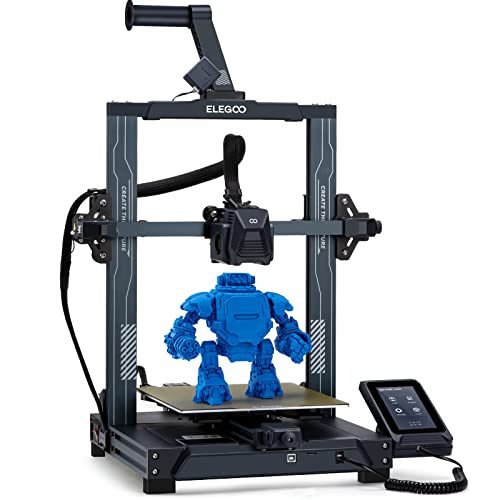When diving into the world of 3D printing, you’ll often hear the terms SLA and FDM pop up. These are two of the most popular printing technologies, and each has its own strengths. Let’s break it down in a way that makes it easy to understand.
SLA, or Stereolithography, is like magic in a liquid form. It uses a special resin that hardens when exposed to a UV light. This method produces incredibly detailed prints with a smooth finish, making it a favorite for models that require a high level of detail. Think jewelry, intricate prototypes, or even dental applications. If detail is key for your project, SLA is where it's at.
On the flip side, we have FDM, or Fused Deposition Modeling. This is the go-to choice for many hobbyists and makers. It works by melting plastic filament and layering it to build your object. FDM printers are generally more affordable and perfect for making functional items, like parts or prototypes that don’t need the fine details of SLA prints. Plus, the variety of filaments available means you can customize your prints with different colors and materials.
So, when comparing SLA vs FDM 3D printers, it’s all about what you want to achieve. If you need precision and a smooth finish, SLA is your best bet. If you’re looking for versatility and cost-efficiency, FDM might be the way to go. Each has its place in the 3D printing landscape, and knowing the differences helps you choose the right one for your needs.
Key Differences Between SLA and FDM
When you're diving into the SLA vs FDM 3D printers conversation, you’ll find some key differences that really matter. First up, let’s talk about how they create objects. SLA, or Stereolithography, uses a laser to cure liquid resin layer by layer. This gives you super smooth surfaces and intricate details. FDM, or Fused Deposition Modeling, uses melted filament to build up the object. It’s simpler, but the finish isn’t as refined as SLA.
Another big difference is the materials involved. SLA printers need special resin, which can be a bit pricey. It’s great for detailed figures or prototypes but be ready for some post-processing. FDM printers, on the other hand, use plastic filament like PLA or ABS, which is generally cheaper and easier to find. If you’re looking to print larger objects without breaking the bank, FDM is a solid choice.
Durability is another point to think about. SLA prints can be a bit fragile compared to FDM prints, which can be quite sturdy, especially with materials like ABS. If your print needs to withstand some wear and tear, FDM is the way to go. But if you want that stunning detail and smooth finish for a display piece, SLA has you covered.
Print speed can also vary between the two styles. FDM printers usually have quicker print times for larger objects since they build up layer by layer fairly quickly. SLA can be slower, especially for tall or detailed prints, due to the curing process. Think about what you need, and that will help you weigh the pros and cons.
So, when you’re trying to decide between SLA vs FDM 3D printers, consider what you’ll be printing. Are you aiming for detail and aesthetics, or do you need durability and affordability? Each has its strengths, so choose what fits your projects best.
ELEGOO 4KG PLA Filament Bundle for 3D Printers
Get high-quality, vibrant colors and reliable performance for all your 3D printing needs with this complete filament bundle
Product information
$49.96
Product Review Score
4.52 out of 5 stars
189 reviewsProduct links
Best Uses for SLA versus FDM
When it comes to choosing between SLA and FDM printers, it's all about what you need to create. Each has its strengths that make them better suited for different projects.
SLA printers are fantastic for creating intricate and detailed pieces. If you're into jewelry design, dental models, or miniatures, these printers shine. The resin used in SLA printing gives you smooth surfaces and fine details that FDM just can't replicate. Plus, the prints tend to have a glossy finish, which can add a touch of elegance to your designs.
On the flip side, FDM printers are the workhorses of 3D printing. They're perfect for functional parts, prototypes, and larger objects. If you need something durable and sturdy, FDM is the way to go. It works with a variety of materials, including plastics that can withstand stress. Think about creating tools, mechanical parts, or even home decor items – FDM handles these tasks with ease.
In the debate of SLA vs FDM 3D Printers, consider how much time and effort you want to invest. SLA printers often need more post-processing, like washing and curing the prints, which can add time to your project. FDM printers, while they might not achieve the same level of detail, are generally easier and quicker to set up. So if you’re looking for convenience and practicality, FDM might be your best bet.
Silk Rainbow PLA Filament 1.75mm for FDM Printers
Brighten up your 3D prints with this vibrant Silk Rainbow PLA that adds a splash of color to every creation
Product information
$5.69
Product Review Score
4.71 out of 5 stars
73 reviewsProduct links
Choosing the Right Printer for Your Needs
When diving into the world of 3D printing, picking the right printer can feel a bit overwhelming. You're probably wondering whether to go for an SLA or FDM printer. Both have their strengths, and your choice really comes down to what you want to create.
If you’re focusing on intricate details and smooth finishes, an SLA printer might be your best bet. It uses a laser to cure resin layer by layer, giving you that stunning detail for miniatures, jewelry, or even dental molds. Just keep in mind, resin can be a bit messy and requires some post-processing. But if you want high-end results, it's worth it.
On the flip side, if you're looking for something user-friendly and budget-friendly, FDM printers shine. They work with plastic filaments and are great for printing larger objects with a bit of structure. They’re quicker to set up, easier to clean up, and there’s a wider variety of materials. Plus, you can find a ton of resources and communities online to help you out.
Think about what you’ll be printing. If you want precise models for games or prototypes, SLA might fulfill your crafty dreams. If you're after functional parts or larger designs, FDM is probably the way to go. Remember, it’s all about aligning the printer's strengths with your creative needs in this SLA vs FDM 3D Printers showdown!





